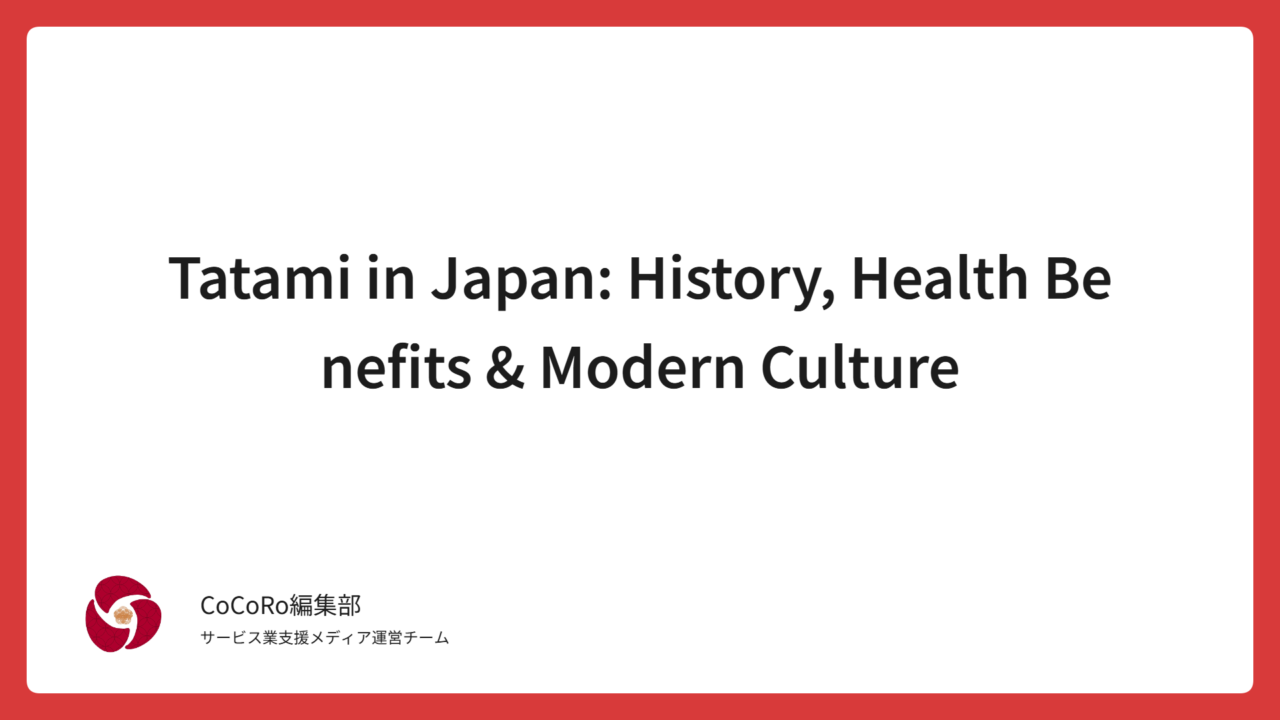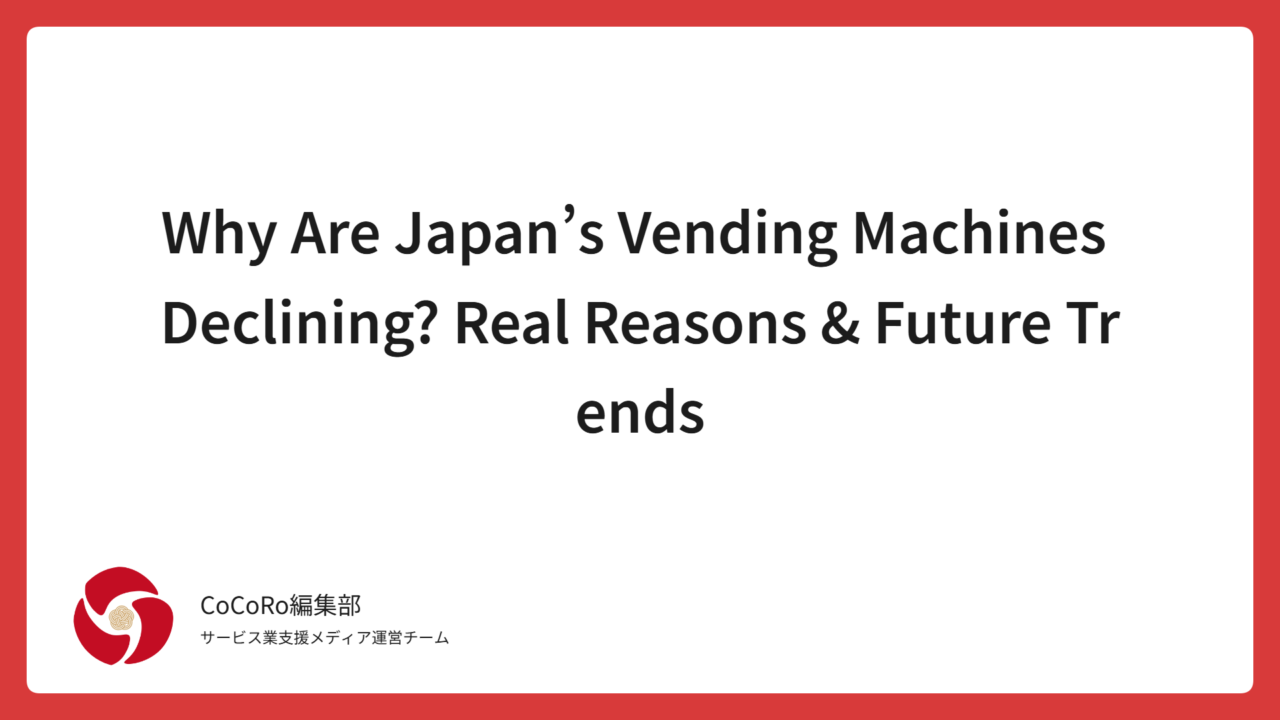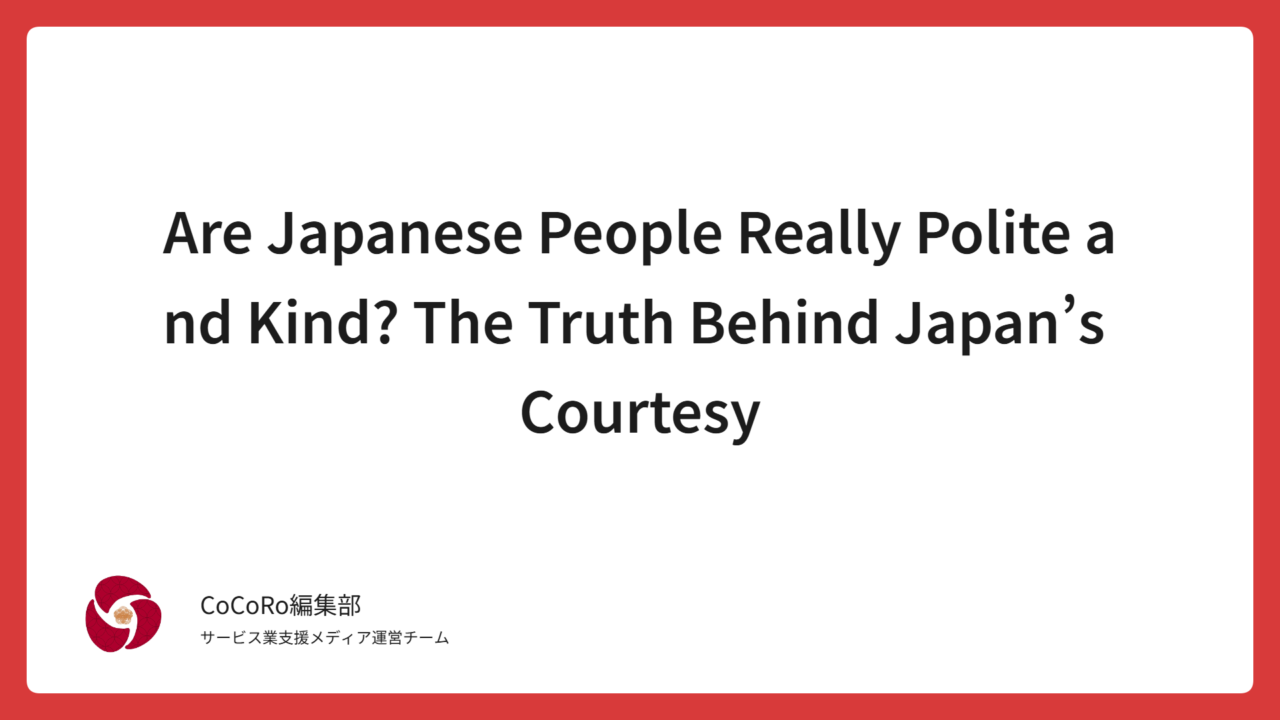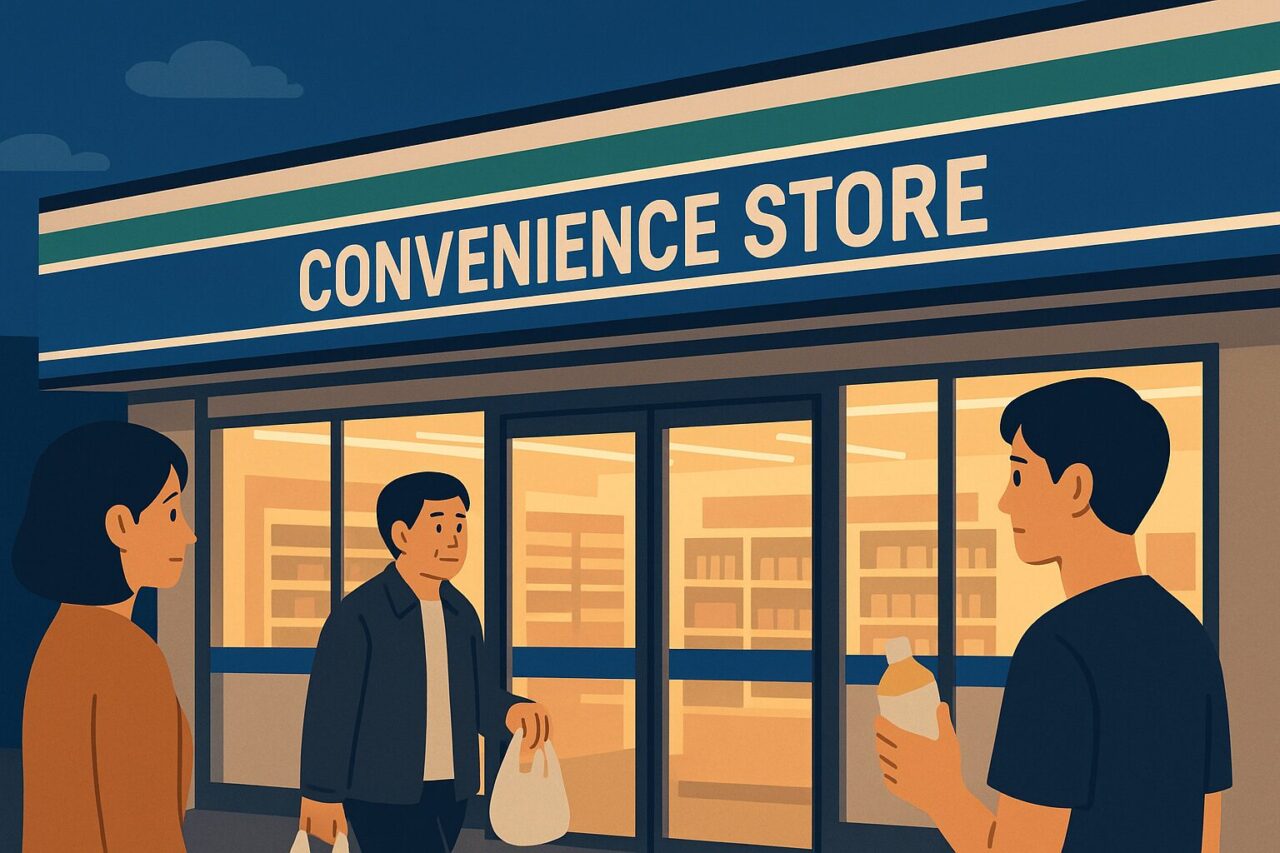
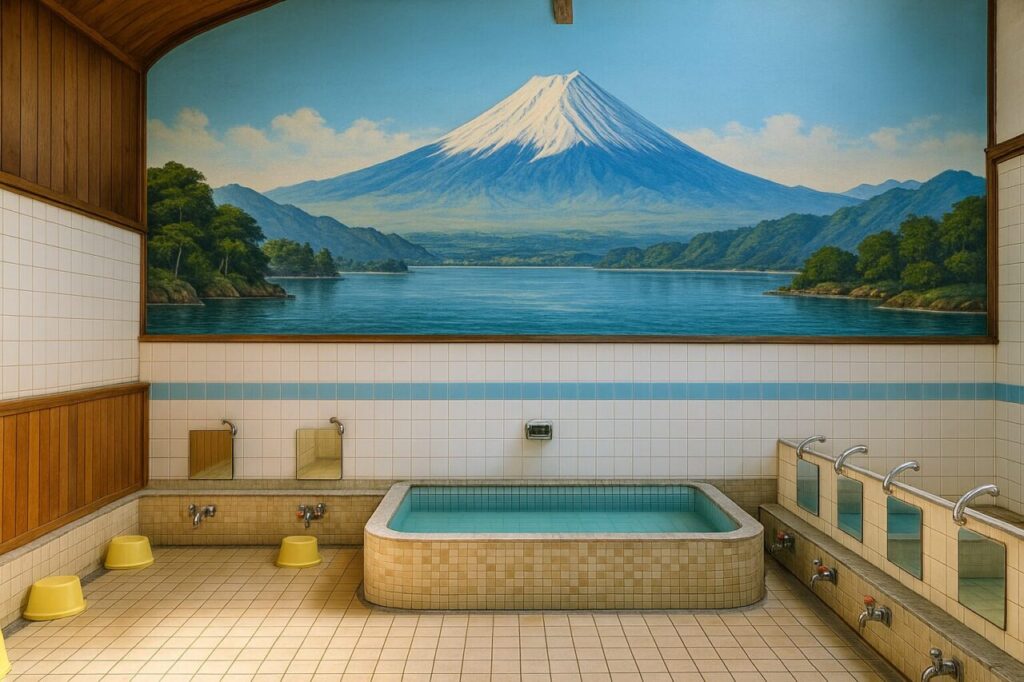
Many international visitors to Japan are struck by how clean, orderly, and well-maintained the streets and public spaces are.
This sense of “Japanese cleanliness” is deeply connected to the country’s long-standing bathing culture, which has shaped daily life for centuries.
The act of cleansing one’s body with water has been important in Japan since ancient times—rooted in Shinto purification rituals (misogi) and everyday bathing practices.
By the Edo period, sento (public bathhouses) had spread nationwide, and today the custom of soaking in warm water to relax and restore the body and mind remains an integral part of Japanese culture.
Because of this long-established bathing tradition, Japan has developed a wide variety of public bathing facilities beyond the home.
Today, four main types are commonly recognized: Sento, Super Sento, Spa, and Onsen.
However, their names often sound similar, and Google Maps does not always categorize them clearly.
As a result, this is one of the areas where international travelers are most likely to become confused or misunderstand what kind of facility they are visiting.
“I thought it was a sento, but it turned out to be an expensive spa.”
“I expected a natural onsen, but it was just regular hot water.”
“I assumed tattoos were allowed, but I was refused entry.”
“I thought English would be understood, but no one could communicate with me.”
All of these misunderstandings are easy to avoid with just a little bit of prior knowledge.
In this article, we introduce the appeal of Japan’s bathing culture while also providing a clear guide to the four types of bathing facilities—explaining their differences and how to choose the right one so travelers can avoid misunderstandings and enjoy the experience with confidence.
- Chapter 1: Japanese Bathing Culture — Everyday Habits That Shape a Sense of Cleanliness
- Chapter 2: Japan’s Four Types of Bathing Facilities — The Essential Basics to Know First
- Chapter 3: Sento — Experiencing Everyday Life in Japan
- Chapter 4: Super Sento — Modern, Comfortable Leisure Facilities
- Chapter 5: Spa — A Quiet, Relaxing Space Designed for Adults
- Chapter 6: Onsen — A Unique Japanese Experience Worth Traveling For
- Chapter 7: Bathing Etiquette — Misunderstandings Can Easily Lead to Trouble
- Chapter 8: Choosing the Right Facility — A Guide to Avoiding Misunderstandings
- Chapter 9: Practical Tips to Avoid Trouble
- Chapter 10: Post-Bath Enjoyment — The Unique “Afterglow” Culture of Japan
- Conclusion — Understanding the Differences Makes Japan’s Bath Culture Even More Fascinating
Chapter 1: Japanese Bathing Culture — Everyday Habits That Shape a Sense of Cleanliness
How the Habit of Soaking in Hot Water Shapes Japan’s Image as a “Clean Country”
The Japanese have long valued the practice of soaking in hot water.
It is not just about washing the body—immersing oneself in a warm bath serves to ease fatigue and calm the mind.
This “bathtub culture” is actually quite rare from a global perspective.
In many countries, showers are the norm, and soaking in a bathtub is something people do only occasionally—perhaps on weekends for relaxation.
In contrast, bathing daily is completely ordinary in Japan.
This habit of “keeping the body clean” is often cited as one of the reasons why Japanese cities appear so clean to visitors.
Why Bathing Facilities Developed Beyond the Home in Japan
In the past, Japanese homes typically did not have private bathtubs, so people regularly visited their local sento (public bathhouses).
Even after household bathtubs became common, the culture of “bathing outside the home” did not disappear.
Instead, it evolved as people sought more comfort and variety, leading to the development of Super Sento, spas, and onsen as diverse bathing experiences.
As a result, Japan has become one of the few countries in the world with such a diverse and richly developed bathing culture.
Chapter 2: Japan’s Four Types of Bathing Facilities — The Essential Basics to Know First
Japan offers four main types of bathing facilities that travelers can use.
Although their names may sound similar, what they provide can differ significantly.
Sento (Public Bathhouse)
A sento is a traditional neighborhood public bath used in everyday life by local residents.
-
Price: A standardized fee nationwide (around 500 yen)
-
Facilities: Basic and simple
-
Users: Mainly local community members
-
Language: Little to no English is spoken
-
Tattoos: Many facilities do not allow tattoos
Super Sento (Modern Large-Scale Bathhouse)
A Super Sento is a leisure-oriented facility that offers not only large baths but also saunas, stone spas, dining areas, and spacious relaxation zones.
-
Price: 800–1,500 yen (with possible additional fees)
-
Bath Variety: Multiple types of baths and pools
-
Audience: Popular among families and couples
Spa (Urban Luxury Relaxation Facility)
A spa in Japan is an upscale, urban relaxation facility designed for comfort and tranquility.
-
Price: 3,000–5,000 yen or more
-
Atmosphere: Hotel-like, high-quality interior and amenities
-
Audience: Ideal for adults seeking a quiet, refined experience
Onsen (Natural Hot Spring Facility)
An onsen is a facility that uses naturally sourced hot spring water, defined by Japan’s Hot Spring Law.
-
Day-use Onsen: Typically 1,000–2,000 yen
-
Stay-over Onsen (Ryokan): 10,000–40,000 yen per person per night
-
Experience: Enjoyed as a complete package that includes the spring’s mineral qualities, scenic views, traditional lodging, and local cuisine
Why Misunderstandings Are So Common
- “Spa” and “Onsen” are easily confused in English, even though they refer to very different types of facilities in Japan.
- Google Maps often categorizes them ambiguously, making it hard to tell what kind of place it actually is.
- Even if a facility’s name includes words like “Yu,” “Spa,” or “Onsen,” the reality may be completely different.
- A Super Sento is not necessarily an onsen—many use regular heated water.
- Many travelers mistakenly believe they can use a luxury onsen ryokan just for bathing, even though many such facilities only allow access to overnight guests.
Because these misunderstandings are so common, it is crucial for visitors to understand the differences between these four facility types before enjoying Japan’s bathing culture.
Chapter 3: Sento — Experiencing Everyday Life in Japan
The Appeal of Sento
A sento is filled with a distinct sense of everyday Japanese life.
Local residents visit regularly, and many facilities retain their nostalgic, old-style architecture.
The retro atmosphere—complete with Showa-era design touches and the iconic painted Mount Fuji murals on the wall—offers visitors a rare opportunity to experience a uniquely Japanese cultural tradition.
Why Sento Prices Are Low
Sento operate as public bathhouses, and their fees are regulated by local government ordinances.
Because of this system, the price is kept affordable and remains nearly the same across the entire country.
Common Misunderstandings About Sento
- Little to no English guidance is available.
- Tattoos are prohibited at most facilities.
- Facilities are minimal and basic, not luxurious.
- A sento is a daily-life facility, not a tourist attraction.
If visitors mistake a sento for a “tourist-friendly onsen,” the gap between expectation and reality can feel quite large.
Chapter 4: Super Sento — Modern, Comfortable Leisure Facilities
What Is a Super Sento?
Super Sento are large-scale, multi-functional bathing facilities that became widespread from the 1990s onward.
They offer an extensive range of amenities—outdoor baths, jet baths, saunas, stone spas, relaxation lounges, and more—making them places where you can comfortably spend an entire day.
Be Aware of the Pricing System
One point that often surprises international visitors is that a Super Sento is not the same as a traditional sento.
Fees for towels, saunas, stone spas, and other services are frequently charged separately,
and the total cost can easily exceed 2,000 yen depending on what you use.
Common Points of Confusion
- Even if the name includes “Sento,” it does not mean it’s an onsen.
- Additional fees can be unclear for first-time visitors.
- Certain times of day can be crowded, especially evenings and weekends.
- The atmosphere is often lively, as Super Sento are popular with couples and families.
Chapter 5: Spa — A Quiet, Relaxing Space Designed for Adults
Characteristics of a Japanese Spa
A Japanese spa is a space dedicated entirely to relaxation, featuring hotel-quality facilities and a calm, refined atmosphere.
In major cities like Tokyo and Osaka, high-floor locations with night views and spacious lounges are especially popular.
Why Spa Prices Are Higher
- Towels and loungewear are typically included in the admission fee.
- The location cost is high, especially for city-center or high-rise facilities.
- The focus is heavily on relaxation and comfort, not just bathing.
In other words, a spa is not a place you can visit with the same expectations as a sento or onsen.
Points Where Misunderstandings Often Occur
- The word “spa” has a different meaning in Japan than in many other countries.
- They do not necessarily use natural hot-spring water.
- Visitors who go expecting a simple public bath may be surprised by the higher price.
Chapter 6: Onsen — A Unique Japanese Experience Worth Traveling For
What Is an Onsen?
Under Japan’s Hot Spring Law, only facilities that use water containing natural hot-spring minerals that meet specific criteria are permitted to call themselves an onsen.
In other words, not all hot baths in Japan qualify as true hot springs.
Day-Use Onsen vs. Stay-Over Onsen
- Day-Use Onsen: Typically 1,000–2,000 yen and available for short visits.
- Stay-Over Onsen (Ryokan): Often 10,000–40,000 yen per person per night, including meals, room stay, hospitality, and scenic surroundings.
These two types provide completely different experiences—one casual and accessible, the other a full cultural immersion.
Reasons Why Onsen Are Often Misunderstood
- The “Onsen” label on Google Maps can be ambiguous, making it hard to tell whether a facility is a true hot spring or just a regular bathhouse.
- The cost of stay-over onsen at ryokan is much higher than many travelers expect, sometimes far beyond the price of casual bath facilities.
- Many visitors mistakenly assume that “onsen = a place you can enter anywhere, anytime,” not realizing that access rules differ widely depending on the facility.
Chapter 7: Bathing Etiquette — Misunderstandings Can Easily Lead to Trouble
Basic Rules That Preserve Japan’s Bathing Culture
In Japan, bathing is a cultural practice built on the values of cleanliness, quietness, and shared space.
Using a public bath without understanding these norms can easily lead to misunderstandings or conflict with other bathers.
Main Etiquette Rules
- Wash your body thoroughly before entering the bath.
- Keep your hair out of the water.
- Do not put your towel into the bath.
- Avoid speaking loudly.
- Do not swim or splash in the bath.
- Photography is strictly prohibited.
These rules are second nature to Japanese bath-goers, but visitors who are unaware of them may unintentionally cause trouble—and end up feeling uncomfortable themselves.
Chapter 8: Choosing the Right Facility — A Guide to Avoiding Misunderstandings
If You Want to Experience Japanese Local Culture: Sento
A sento is the best choice for travelers who want to experience authentic, everyday Japanese culture.
However, it’s important to choose it with the understanding that facilities are simple, tattoos are often not allowed, and there may be a language barrier.
If You Want to Spend a Relaxed, Extended Time: Super Sento
A Super Sento is ideal for those who want more than just a bath—
you can spend the whole day enjoying rest areas, meals, stone spas, and more.
However, be sure to check the pricing system in advance, as additional fees can apply.
If You Want a Quiet, Restorative Experience: Spa
Spas are especially popular in major cities like Tokyo and Osaka.
They offer calm, refined spaces, relaxing lounges, and sometimes high-floor views.
Keep in mind that the price range is completely different from a sento,
so expectations should be adjusted accordingly.
If You Want to Enjoy Japanese Nature and Travel Atmosphere: Onsen
An onsen offers a complete cultural experience that includes scenic views, mineral-rich hot spring water, traditional cuisine, and the hospitality of a ryokan.
Understanding the difference between day-use and stay-over onsen will help prevent misunderstandings.
Chapter 9: Practical Tips to Avoid Trouble
Keep Your Belongings to a Minimum
Although towels and soap can be purchased at most facilities,
you’ll feel more secure if you bring only essential valuables with you.
Avoid Bathing After Drinking Alcohol
Hot bath temperatures and saunas in Japan are often stronger than those in many countries.
Bathing after drinking alcohol can be dangerous and should be avoided.
Avoid Peak Hours
The busiest time is typically 19:00–22:00, which can be overwhelming for first-time visitors.
Late morning to late afternoon tends to be less crowded and more comfortable.
Do Not Assume English Will Be Understood
Many facilities do not have staff who can speak English.
However, most places provide clear pictograms and visual instructions,
so once you get used to them, you should be able to navigate the facility without issues.
Chapter 10: Post-Bath Enjoyment — The Unique “Afterglow” Culture of Japan
The Post-Bath Milk Tradition
The Japanese bathing experience isn’t complete the moment you step out of the bath—
it continues into the after-bath moment.
A classic example is the tradition of drinking coffee milk or fruit milk at sento and onsen.
These refreshing drinks soak into your warmed body and often become one of the memorable highlights of the trip.
Massages and Dining Areas Add to the Experience
At Super Sento and onsen facilities, you can also enjoy massages, stone spas, dining areas, and other amenities.
These features are designed so that the time after bathing is just as enjoyable and relaxing as the bath itself.
Conclusion — Understanding the Differences Makes Japan’s Bath Culture Even More Fascinating
By understanding the differences among Japan’s various bathing facilities,
you can greatly enhance the overall quality and satisfaction of your trip.
A sento lets you experience the rhythms of everyday Japanese life.
A Super Sento offers hours of relaxation and diverse amenities.
A spa provides a calm, refined space for quiet rejuvenation.
And an onsen delivers the quintessential Japanese travel experience,
combining scenery, mineral-rich waters, hospitality, and tradition.
Each one has its own unique charm,
and together they form one of the most distinctive cultural landscapes in Japan.
And above all, the most important thing is
to avoid misunderstandings and enjoy the experience with confidence.
I hope this guide helps you do exactly that.

